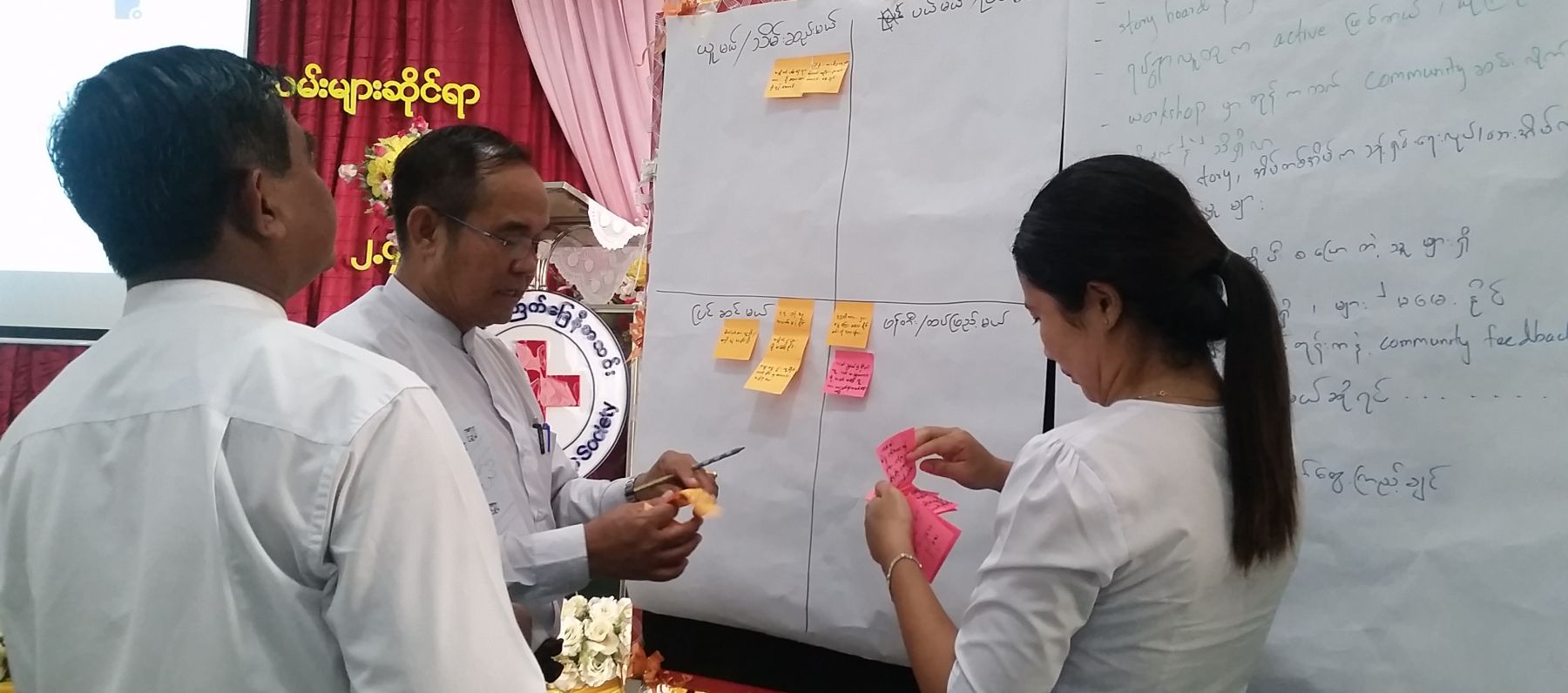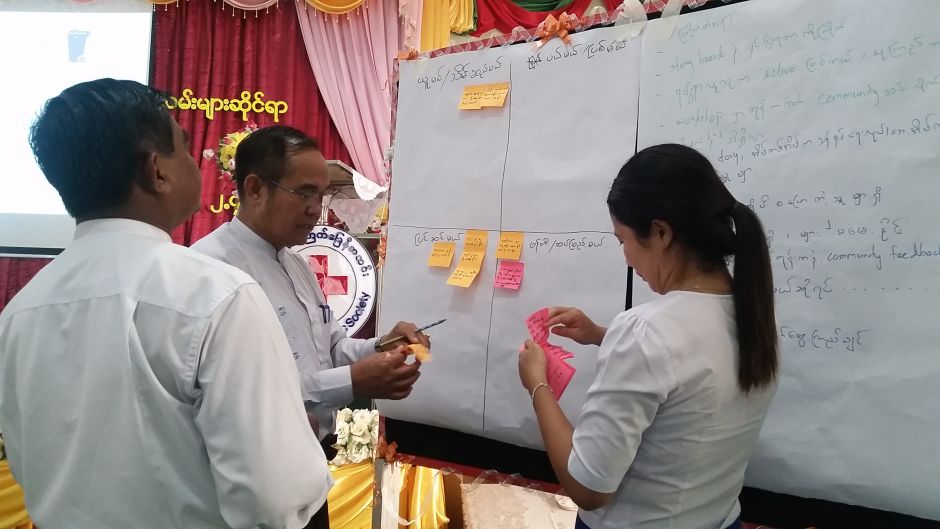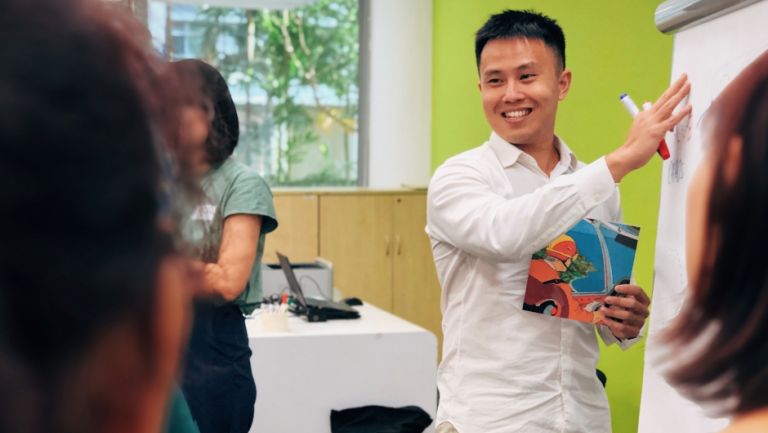Sign up for our monthly newsletter

Human-centred design builds disaster resilience in Myanmar
When heavy monsoons and resulting landslides hit Myanmar in mid-2018, the damage was overwhelming. More than 268,000 people were displaced and thousands of homes were destroyed or damaged.
It was a devastating blow for a nation that is not only susceptible to the kinds of natural disasters that can befall coastal parts of Southeast Asia but has limited infrastructure and experience to prioritise disaster prevention and preparedness.
Much hard work has been going on in Myanmar and progress is being made, both in preparing to respond to emergencies once they occur, but also in disaster mitigation and risk reduction beforehand.
Those vital capabilities will be boosted by a ground-breaking collaboration between ThinkPlace, the American Red Cross and local communities.
THE CHALLENGE
ThinkPlace has been engaged by American Red Cross as a part of the ‘Coalition Building in Coastal Cities’ project to develop a methodology that can support city coalitions in co-designing their own solutions to disaster risks.
Together, we are working with communities in Mawlamyine, Myanmar to create a toolkit that will support them to better prepare for, reduce and prevent impact from natural hazards. And we are doing it using fundamental principles of human-centred design that are new to this part of the world but are already having a massive effect.
This is a project that will have a really meaningful impact. We are working with a broad range of community members to build their own design capacity. Together they are learning principles that are the same ones we use in our design work around the world every day. And it’s incredible to see how quickly they are taking to those new ideas and ways of working - Laura Benns, ThinkPlace Singapore.
OUR RESPONSE
In a large room in the city of Mawlamyine, a three-day human-centred design workshop is underway. This was one of the affected areas of the 2018 monsoon floods. Thousands were left homeless.
Gathered for the design session are a diverse mix of people. Members from the Myanmar Red Cross, civil servants, police and other emergency services workers, local government representatives and the American Red Cross country team.
After a day one crash-course on the stages of human-centred design they have moved quickly to identifying major disaster risks and challenges their city faces and are collaborating on potential interventions.
Ideas are brainstormed using rapid post-it noting as people move around the room. Group discussions sort, evaluate and enhance those ideas and then basic prototypes are fashioned out of cardboard and other rudimentary materials.
Members of the group then go out into their community to test these prototypes with real people. Will they work? How might they be improved? How can they be implemented and scaled?
The possibilities are many. Previous floods in this area have been worsened by the lack of a quality waste disposal system in the city. When rubbish is left in the streets, clogging up basic drainage, sudden floods can quickly lead to problems with sanitation and public health risks.
What kind of solutions might prevent this happening? How might the community design new waste management practices that will be adopted and will be pragmatically suitable for this city and its people? These are just some of the questions being explored.
Other prototypes tackle other parts of this complex problem. Recycling is difficult in Mawlamyine, leading to a proliferation of plastics that block drains and increases susceptibility to flooding. What might a successful recycling collection infrastructure look like here?
THE IMPACT
Human-centred design – the idea that solutions should be crafted with input from and empathy for the end users who will experience them – represents a significant disruption to business as usual Myanmar.
A challenge for those operating in Myanmar is how to get buy-in for change from local communities when longstanding power dynamics mean that some groups feel more or less able to have their say and be heard. Government and community structures tend to be very hierarchical.
Part of the challenge for ThinkPlace’s design team is giving a voice to people who don’t always have one, and providing those voices with the tools to help make change.
Another is fostering community strength and resilience. The underlying assumption of this project is that coalitions in vulnerable coastal cities are better placed to define local problems and design cost-effective, sustainable solutions than external organisations. Using design thinking methods, it is hoped that communities can develop and implement their own disaster risk management and resilience plans.
“In the long run this way of catalysing change will be far more empowering for the communities but also far more successful and sustainable,” says ThinkPlace Australia’s Sarah Patterson.
“It has been inspiring to see how easily the people of Mawlamyine have picked up a ‘designerly’ way of working. The ideating, prioritising of ideas, making things and role playing was really natural. They needed very little guidance.”
FROM MYANMAR TO THE WORLD
Designers from ThinkPlace Singapore and ThinkPlace Australia have been piloting the new design methodology in the field in Mawlamyine. The city is one of three pilot locations for the Coastal Cities Resilience Project. Earlier prototyping has already taken place in Indonesia and Vanuatu.
Thanks to a contribution from the ThinkPlace Foundation we were able to return to the field after an initial piloting exercise to guide local coalition members through the process of engaging with community members and learning from them about how to improve their prototype solutions.
The methodology and toolkit we have developed together will have global impact. The toolkit will be shared broadly across the American Red Cross and International Federation of Red Cross and Red Crescent (IFRC). Not only will the toolkit designed and tested in Mawlamyine be used across Myanmar, it will also be used to improve preparedness in disaster-prone developing nations across the globe.








